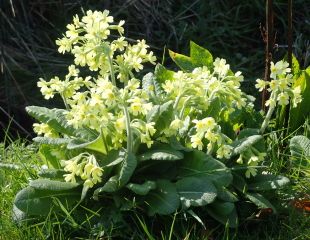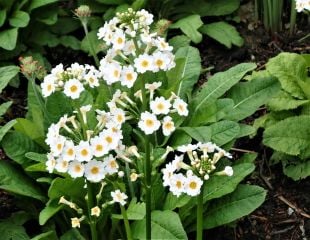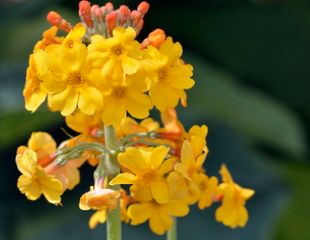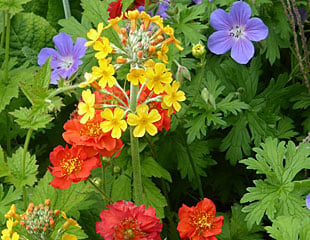
Primula veris

Primula beesiana

Primula denticulata
How to grow Primula

Primula are easy to grow perennial plants which come in many colours and shapes. Primula is a complex genus with over 400 species. Many gardeners thinking about Primula will bring to mind the popular Polyanthus types illustrated left and they make a cheerful display. But, there are many more primulas in different shapes, sizes and colours, flowering through spring to early summer.
Within the genus are the Polyanthus group is the most common, frequently sold online and in garden centres as winter and spring bedding. Just a note about Polyanthus. They are hardy and you can bring them home from the garden centre in February and March and plant them out. They are H5 hardy, which is usually hardy all over the UK (except in extreme weather.)
Where to plant Primula

Primula like to grow in moist soil, and many varieties including, Candelabra, are popular to grow by streams, in bog gardens and in semi shade.
Primulas are best grown in dappled shade in soil which is not prone to drying out. The Candelabra varieties will grow in even wetter conditions, including a bog garden.
Primula is a woodland plant and will benefit from a mulch of organic matter or leaf mould. Primula is a tough plant and will do well in most spots as long as it is not too dry or baking hot sun. If, as is sometimes the case, the leaves get a bit discoloured, brown at the edges, just snip them off. Dead heading will help to keep the plant flowering.
The simple cowslip, Primula veris image bottom left, looks lovely in a natural setting and will colonise a bank forming clumps. Primula self seed near to the mother plant, and it is easy to dig up the little seedling and grow on or discard depending on requirements.
Primula looks good planted on mass together, and with spring-flowering bulbs. The later flowering varieties such as Candelabra are ideal with Geraniums and Geum as shown in the images below right.
Crocus has over 40 varieties of Primula for sale, including the native primrose P. veris. (affiliate links)
Different Types of Primula
The first image, top left, is the Primrose group which includes Primula vulgaris, the common primrose which is early flowering. There are many good reasons to grow Primroses, one of our lovely native flowers. Primrose provide early nectar and also is a food plant for larvae of the rare Duke of Burgundy butterfly.
The image centre is of the Candelabra varieties, P. beesiana which is a taller, later flowering Primula.
Illustrated top right P. denticulata, which as its name suggests, looks like a 'drumstick'. It is early flowering and a popular Primula to mix with spring bulbs.
P. candelabra are herbaceous, which means they die back in the winter to bare earth. They return reliably each year for a great spring display and often flower into early summer. The polyanthus and primrose groups tend to be evergreen, or semi-evergreen.
Primula vulgaris, the common primrose, looks lovely in a natural setting such as on a bankside, and it will multiply over time. Some varieties of Primula vulgaris are scented and shade tolerant. Whilst many Primulas are low growing, the popular Candelabra beesiana will grow up to 60cms and the variety 'Harlow Carr' image below left, is tall and has mixed tones of oranges and pinks
The name Polyanthus describes hybrids of P. vulgaris (Primrose) and P. veris (Cowslip) and these plants are often treated as bedding and discarded each year. Fact is, they are perennial and will come back the following year, especially if planted in favourable conditions. To keep them going for a few years, Polyanthus are best planted where there is good winter and spring light, the ideal growing conditions for them to grow and flower. Polyanthus enjoy a degree of shade over the summer when they die back and then, they will hopefully re start in winter. Although Polyanthus are perennials and potentially can live for many years, in reality most gardeners will persuade them into flower for only 3/4/5 years, after which they may look a tad tired and have few flowers. The name Primula is derived from the Latin primis, meaning first and often Polyanthus are one of the first and very welcome flowers of spring.

This is the Primula I like best of all, P. Harlow Carr, a tall candelabra primula. It is long flowering and hardy. This primula flowers in shades of pink, yellow, orange, purples from May through to June. It is tolerant of wet and can be planted in damp and boggy areas. Also tolerant of partial shade, it is ideal for a tricky area.


Primula veris the common cowslip

